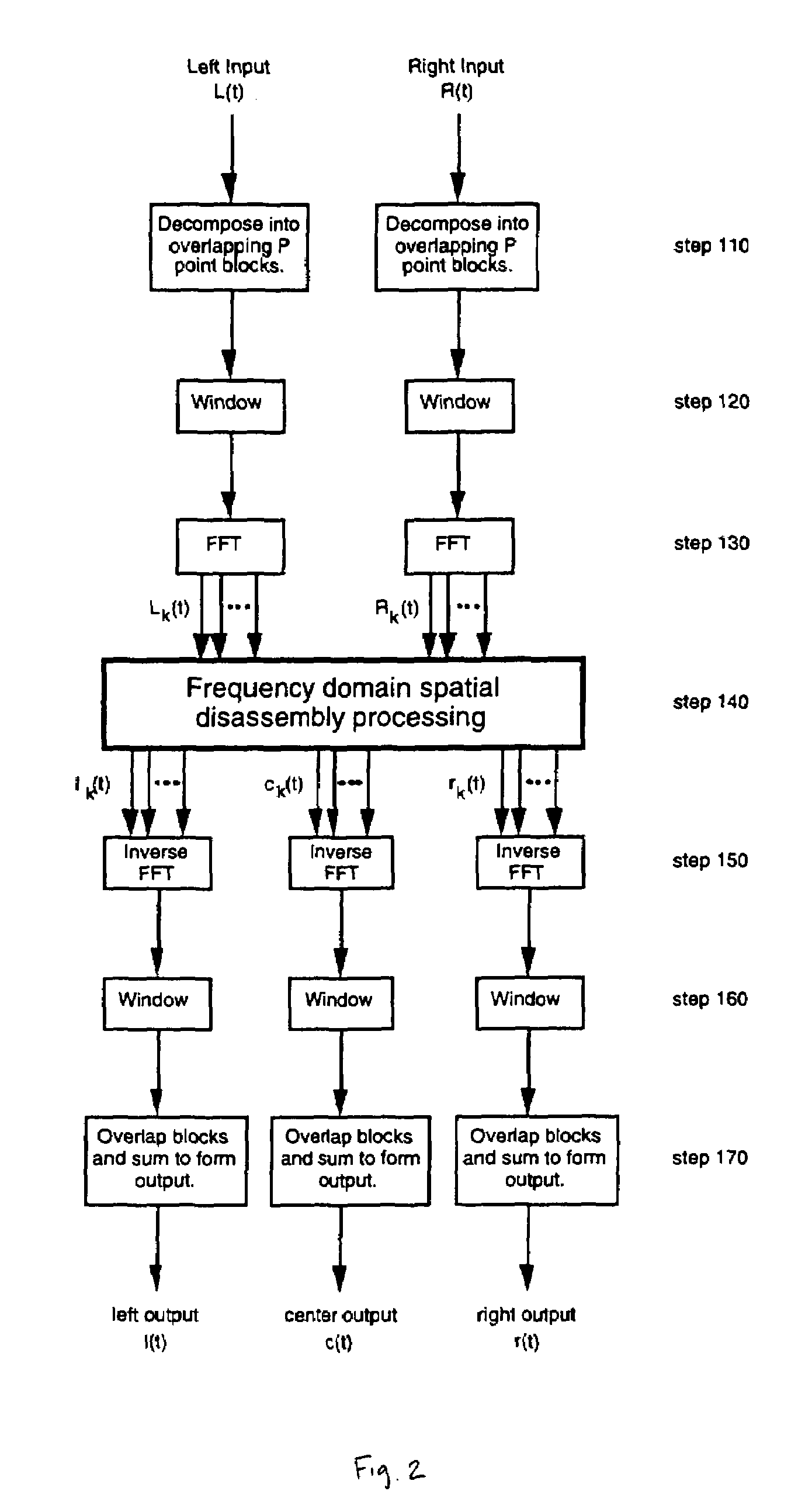Spatial disassembly processor
a spatial disassembly and processor technology, applied in the direction of electrical apparatus, stereophonic systems, stereophonic arrangments, etc., can solve the problems of limited separation between output channels, inability of steered systems to simultaneously produce sound at several locations, and no single mathematical model accurately describes localization over the entire hearing range, so as to achieve easy incorporation
- Summary
- Abstract
- Description
- Claims
- Application Information
AI Technical Summary
Benefits of technology
Problems solved by technology
Method used
Image
Examples
Embodiment Construction
[0032]The described embodiment is of a 2 input-3 output spatial disassembly system. The stereo input signals L(t) and R(t) are processed by a 2 to 3 channel spatial disassembly processor 10 to yield three output signals l(t), c(t), and r(t) which are reproduced over three speakers 12L, 12C and 12R, as shown in FIG. 1. The center output speaker 12C is assumed to lie midway between the left and right output speakers.
[0033]The described embodiment employs a Short-Term Fourier Transform (STFT) in the analysis and synthesis steps of the algorithm. The STFT is a well-known digital signal processing technique for splitting signals into a multitude of frequency components in an efficient manner. (Allen, J. B., and Rabiner, L. R., “A Unified Approach to Short-Term Fourier Transform Analysis and Synthesis,” Proc. IEEE, Vol. 65, pp. 1558-1564, November 1977.) The STFT operates on blocks of data, and each block is converted to a frequency domain representation using a fast Fourier transform (FF...
PUM
 Login to View More
Login to View More Abstract
Description
Claims
Application Information
 Login to View More
Login to View More - R&D
- Intellectual Property
- Life Sciences
- Materials
- Tech Scout
- Unparalleled Data Quality
- Higher Quality Content
- 60% Fewer Hallucinations
Browse by: Latest US Patents, China's latest patents, Technical Efficacy Thesaurus, Application Domain, Technology Topic, Popular Technical Reports.
© 2025 PatSnap. All rights reserved.Legal|Privacy policy|Modern Slavery Act Transparency Statement|Sitemap|About US| Contact US: help@patsnap.com



